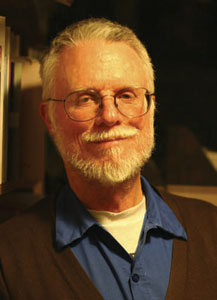Mix It Up

DAN DUGAN HAS FOUND A WAY TO MELD ART AND ENGINEERING THROUGHOUT HIS CAREER
Quick Bio
NAME: Dan Dugan
TITLE: Owner
COMPANY: Dan Dugan Sound Design
OVERTIME: Dugan’s patented equipment is used in thousands of houses of worship, courtrooms, and on television shows including The Late Show With David Letterman, Oprah, and Washington Week.
SCN: What first triggered your lifelong fascination with the intersection of art and technology?
DAN DUGAN: Probably my parents taking me to the theater in San Diego, CA. I was taken to Shakespeare at the Old Globe and summer musicals in the Ford Bowl. I always wanted to go backstage to see the light board. I also went to the Civic Organ concert in Balboa Park every Sunday, and went along when the organ tuner in attendance gave tours of the organ chambers.
SCN: You began your career in theatrical lighting, but at the age of 24 switched to theater sound, working for the San Diego National Shakespeare Festival and the American Conservatory Theatre in San Francisco, CA. In fact, it is said that the title “sound designer” was created in 1968 to describe what you were doing. How do you define that term?
DD: I did both sound and lighting for some years, then decided to concentrate on sound because it was more solitary and more suited to my nerdy personality.
Yes, the title was created by production stage manager Dorothy Fowler at ACT for the 1968-69 season in San Francisco, CA. A sound designer controls everything audio from the microphones to the audience’s ears.
A daily selection of the top stories for AV integrators, resellers and consultants. Sign up below.
I was pleased to see the term adopted in the film industry, but there it has split into two different crafts. The original is the same as in theater, earlier it was called “supervising sound editor.” But the title is also given to a specialty sound creator who doesn’t design the overall production, just creates effects like monster sounds. I don’t care for this second definition, but that’s the way it’s developed. I repair sound equipment for the movies (still doing Nagras people buy on eBay) but I’ve never worked in production.
SCN: You are well known in audio engineering as the inventor of the automatic microphone mixer. Needless to say, this has had a tremendous impact on the installed sound industry.
DD: That’s only part of it. When my Altec licensing ended and I was free to develop products, I set out to show the world that automatic mixing wasn’t just for the church closet. The main markets for my high-end automixers are broadcasters and staging companies.

The original “sound designer,” Dugan invented the automatic microphone mixer in 1973.
SCN: What do you feel needs to be invented today to push audio technology forward?
DD: Easier-to-use tools for analyzing room acoustics, tools that diagnose problems and suggest solutions. Acoustician in a box. Equalization is just the beginning.
SCN: Today you work in your laboratory in San Francisco manufacturing various inventions, servicing sound equipment for the film industry, and editing your surround-sound nature recordings. What is it about science and art that provides you with the drive to innovate?
DD: Engineering and art together, what could be more fun? Ditto for hiking in the wilderness and engineering together!
SCN: How would you complete the following statements?
We can escape the tyranny of bad sound if… we teach (and demand knowledge of) the engineering side of audio. Every recording studio used to have an engineer who tuned up the tape recorders daily, did repairs, and built custom equipment as it was needed. This is no longer the case, as digital audio gear requires no maintenance. The negative side of this mostly wonderful evolution is a studio culture ignorant of engineering. Pro audio equipment is now marketed on hype rather than knowledge of facts about its performance. That has opened the door to a lot of nonsense and even outright fraud.
They always cue the sound of feedback when someone takes a mic in television and movies because… Scotty: “A canna’ change the laws of physics, captain!”
